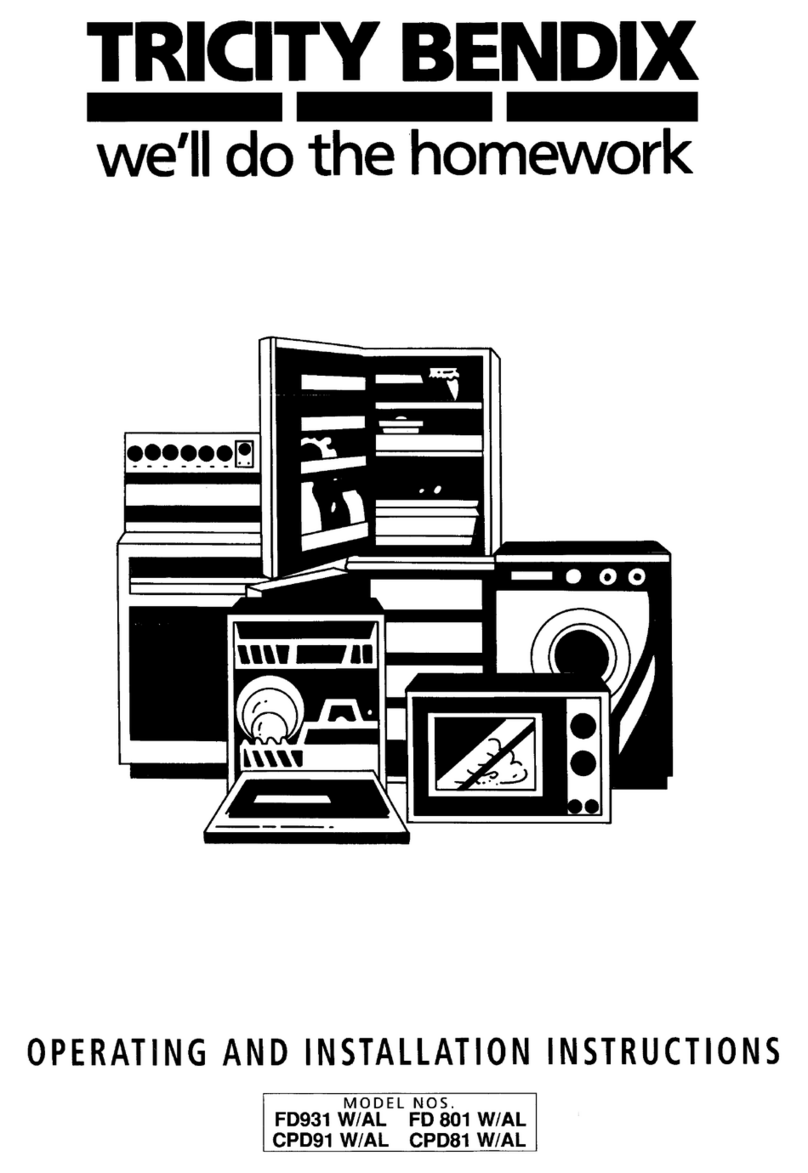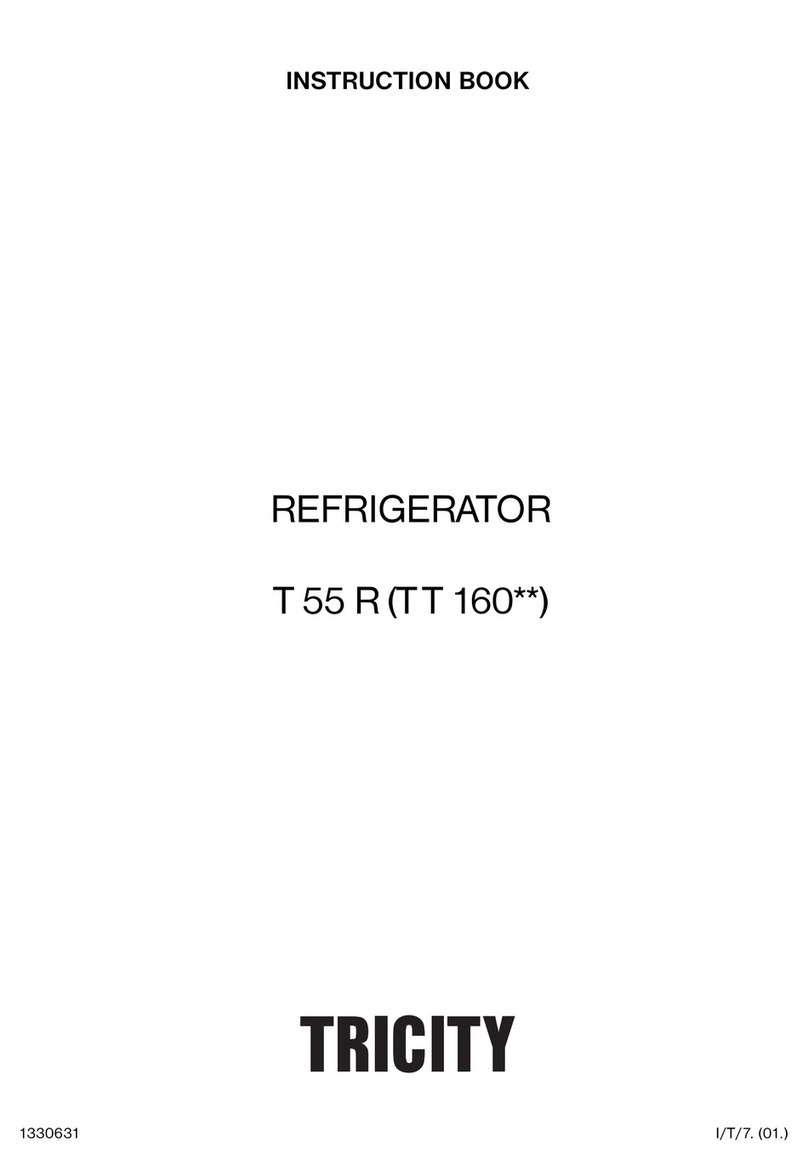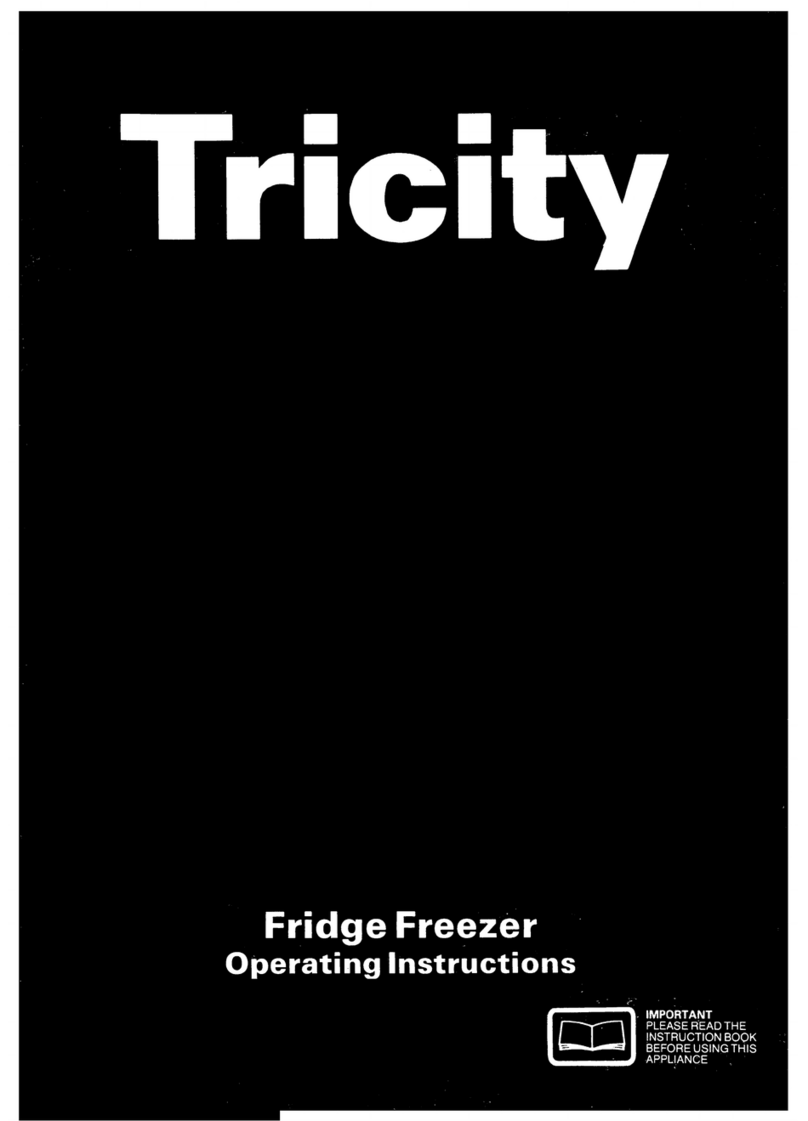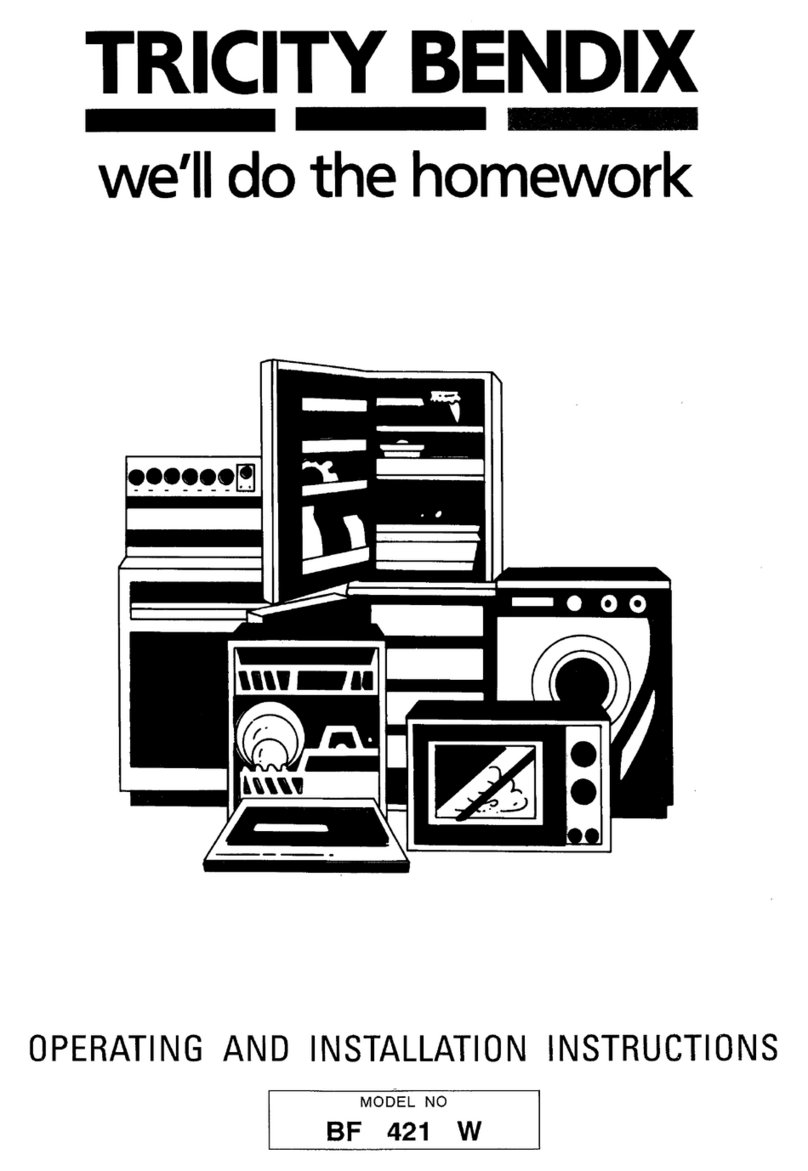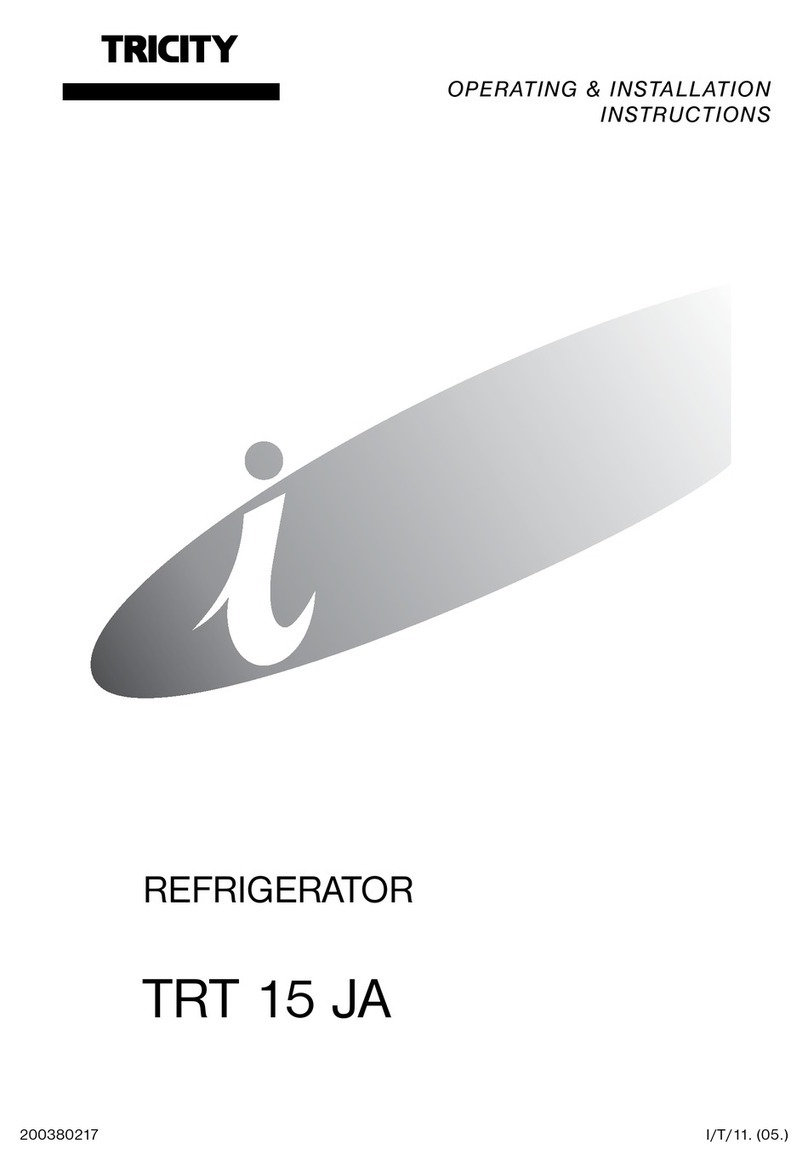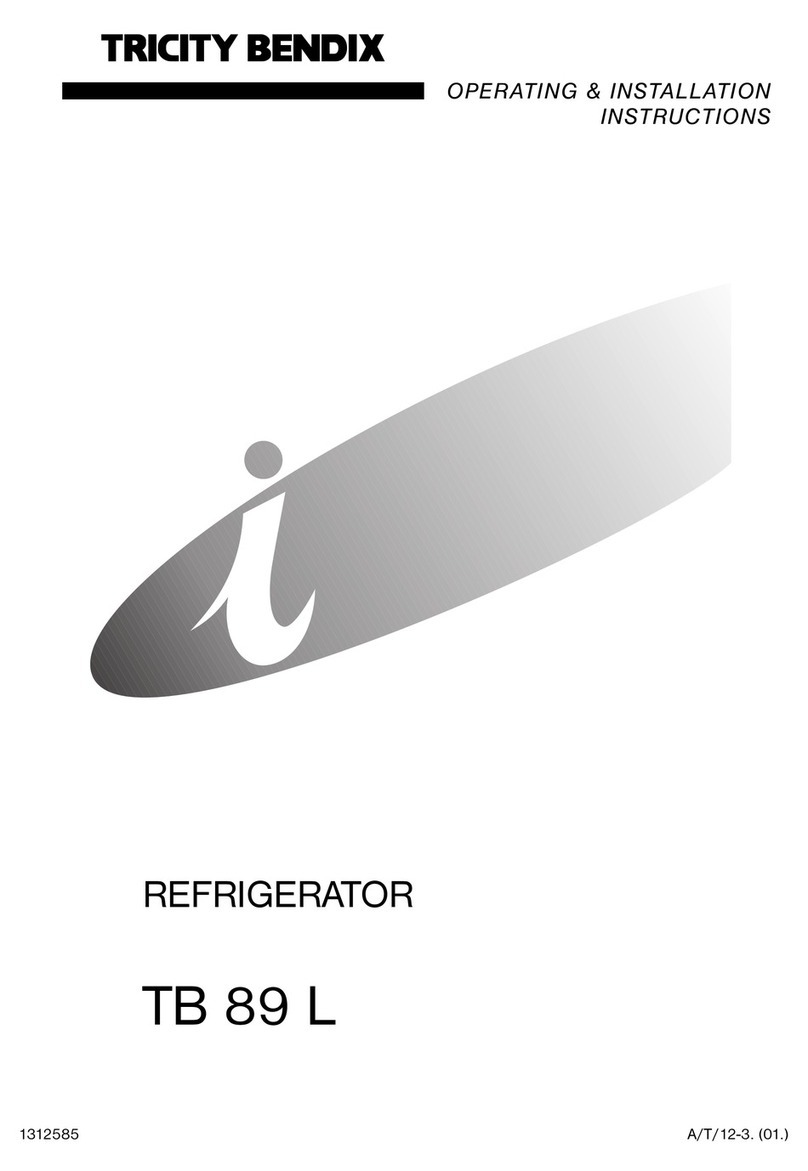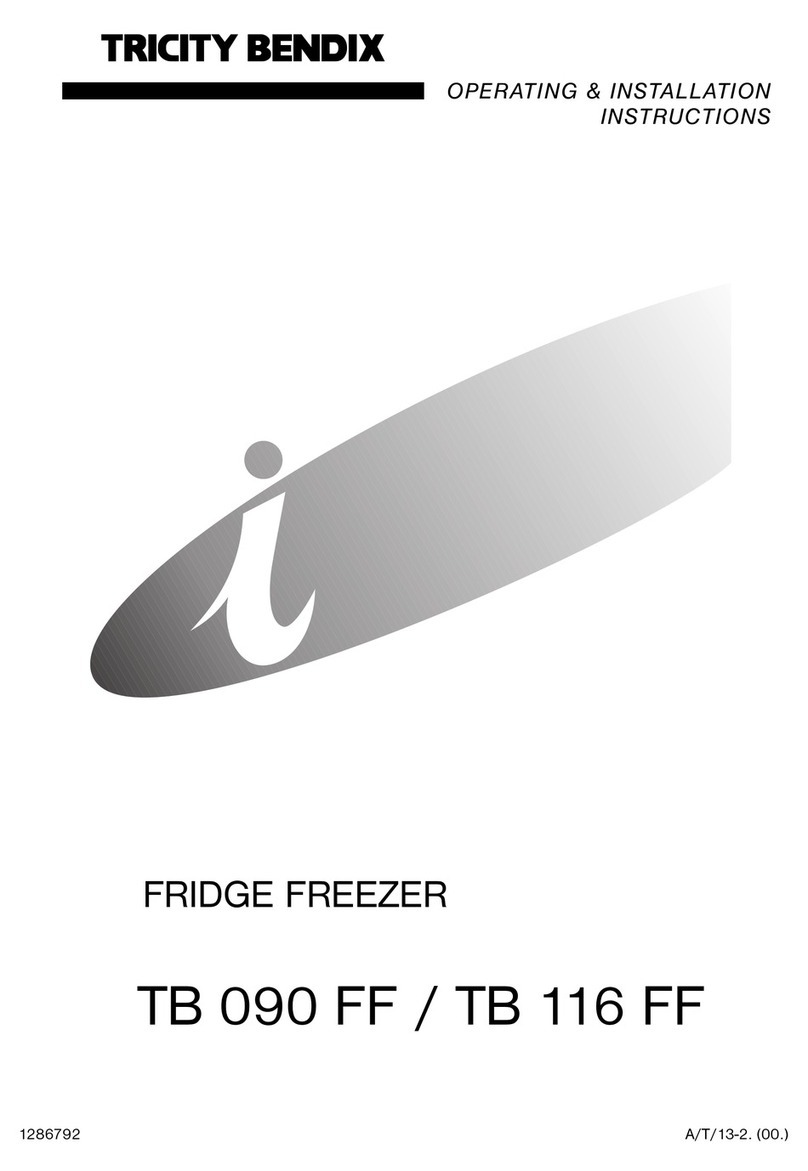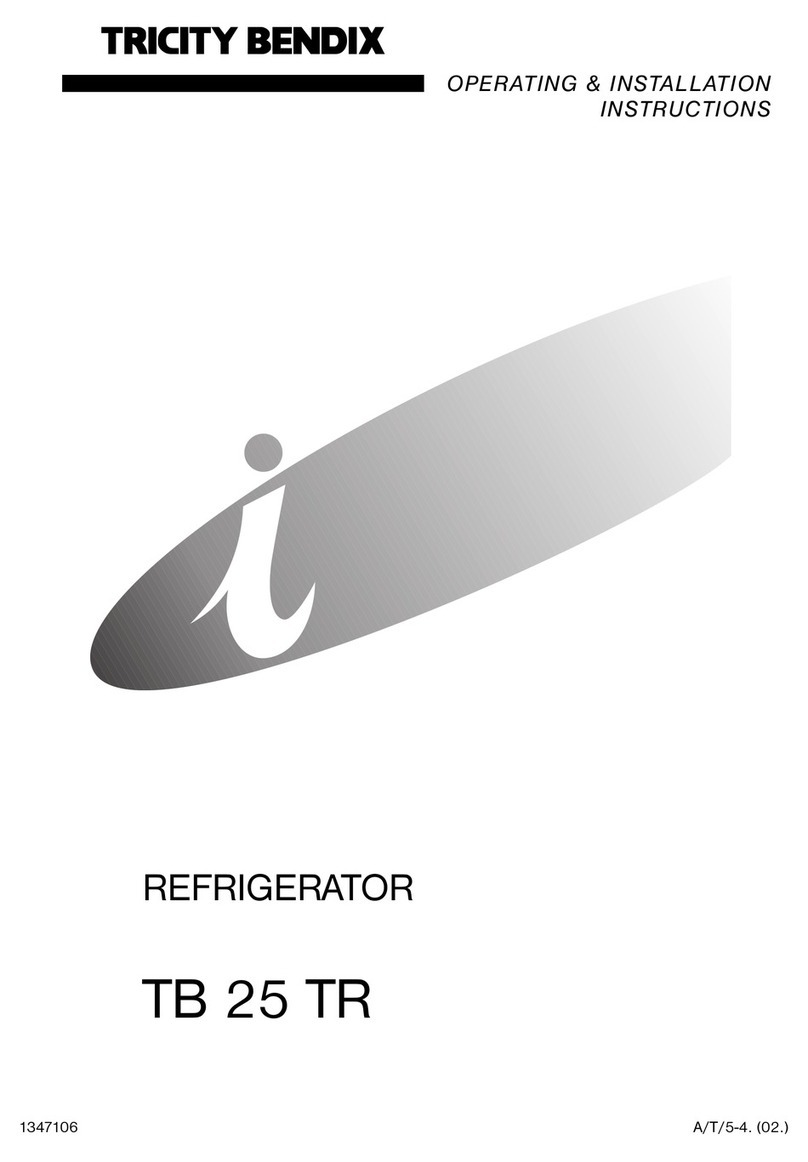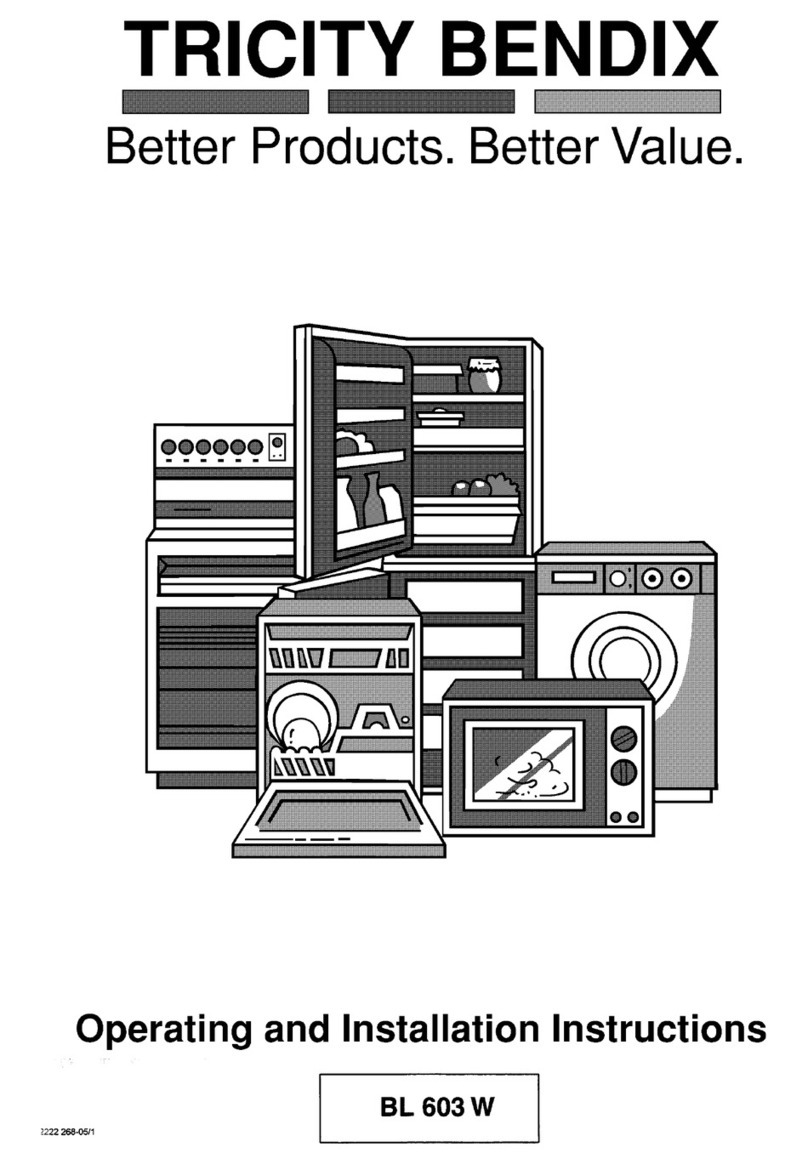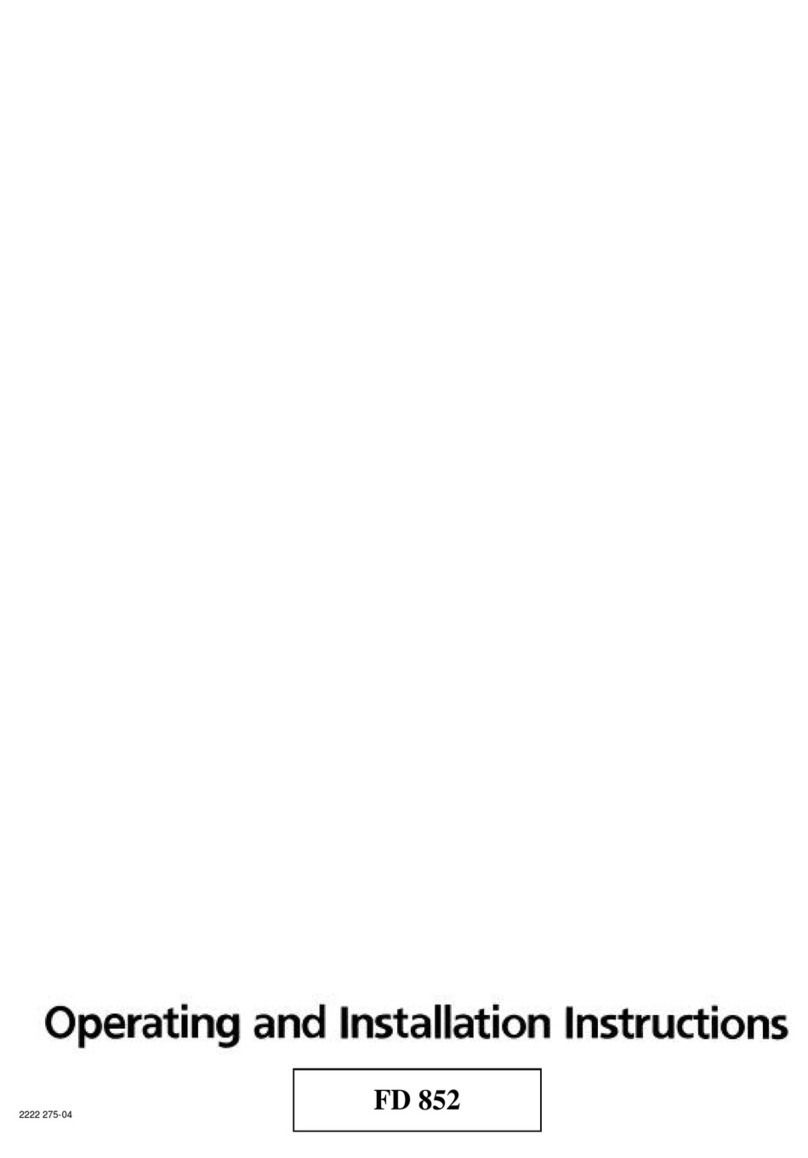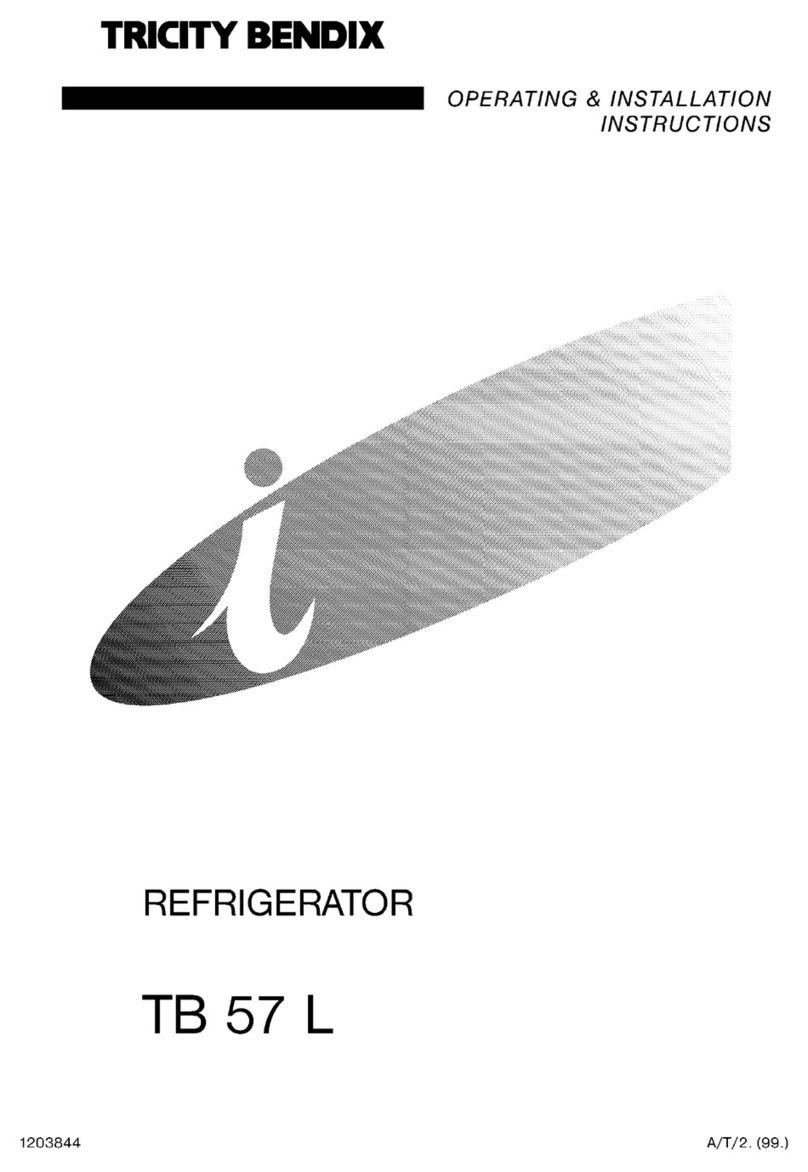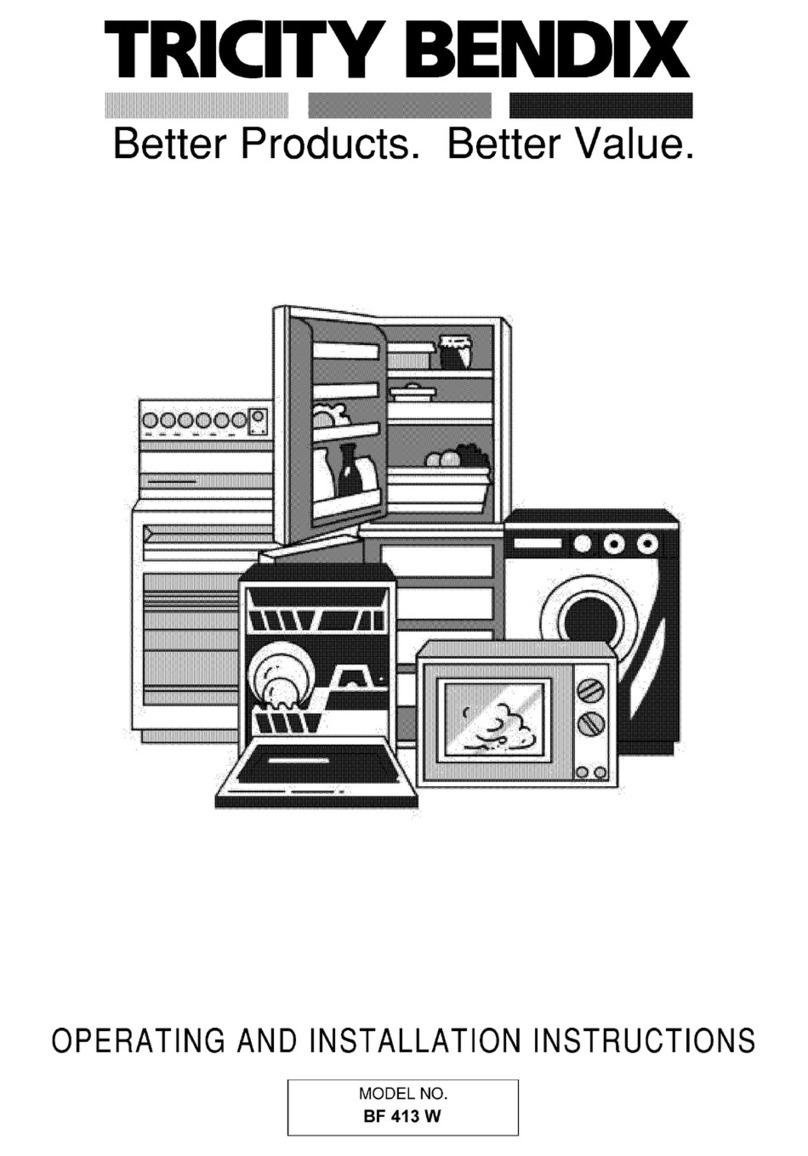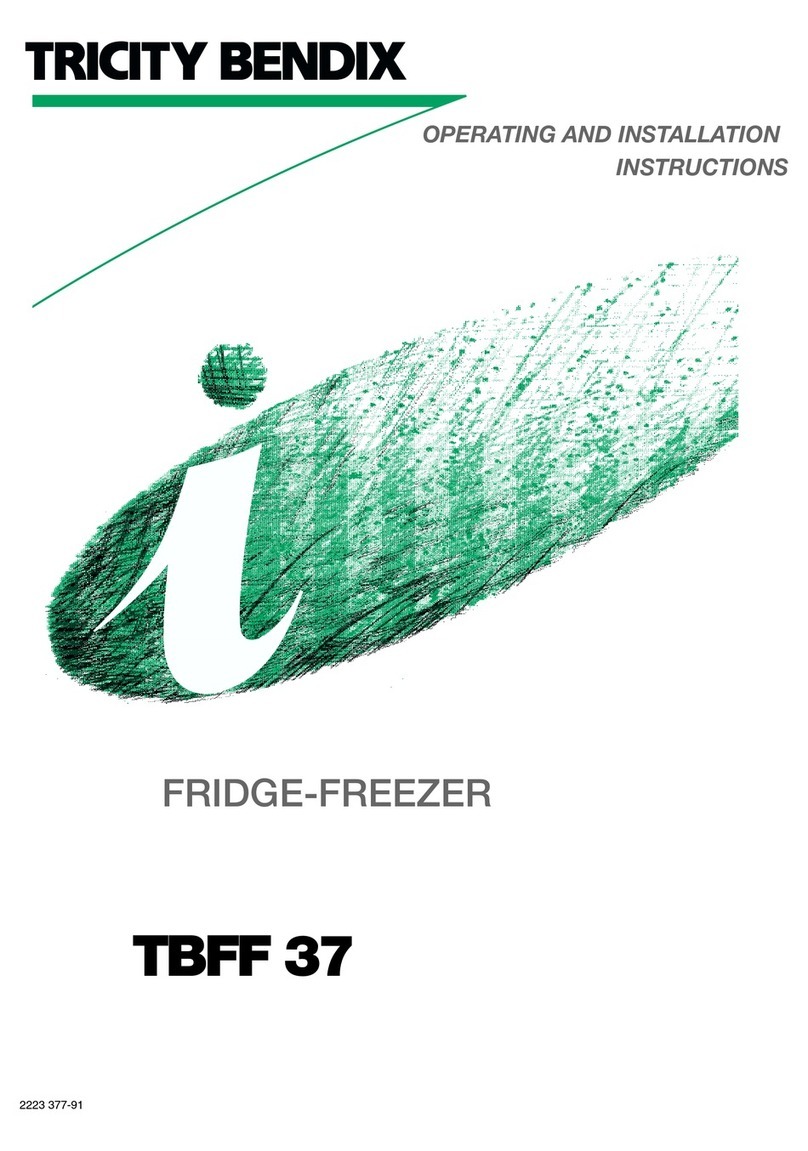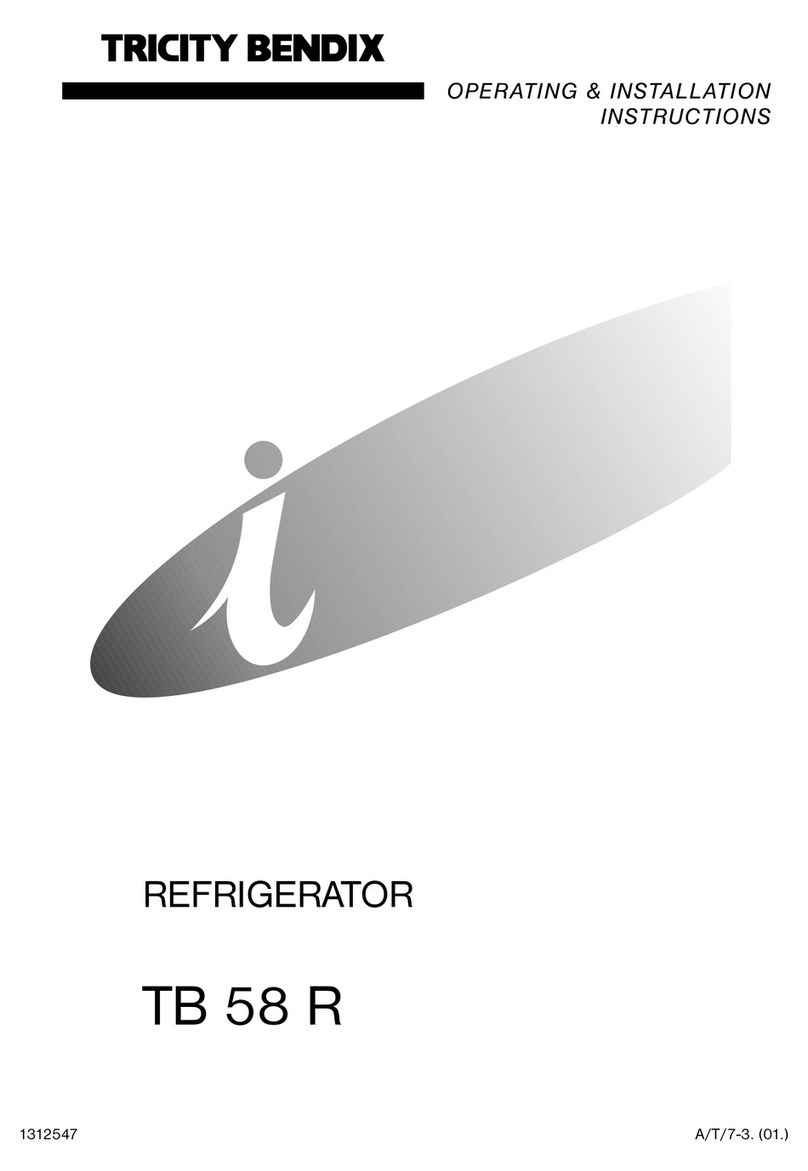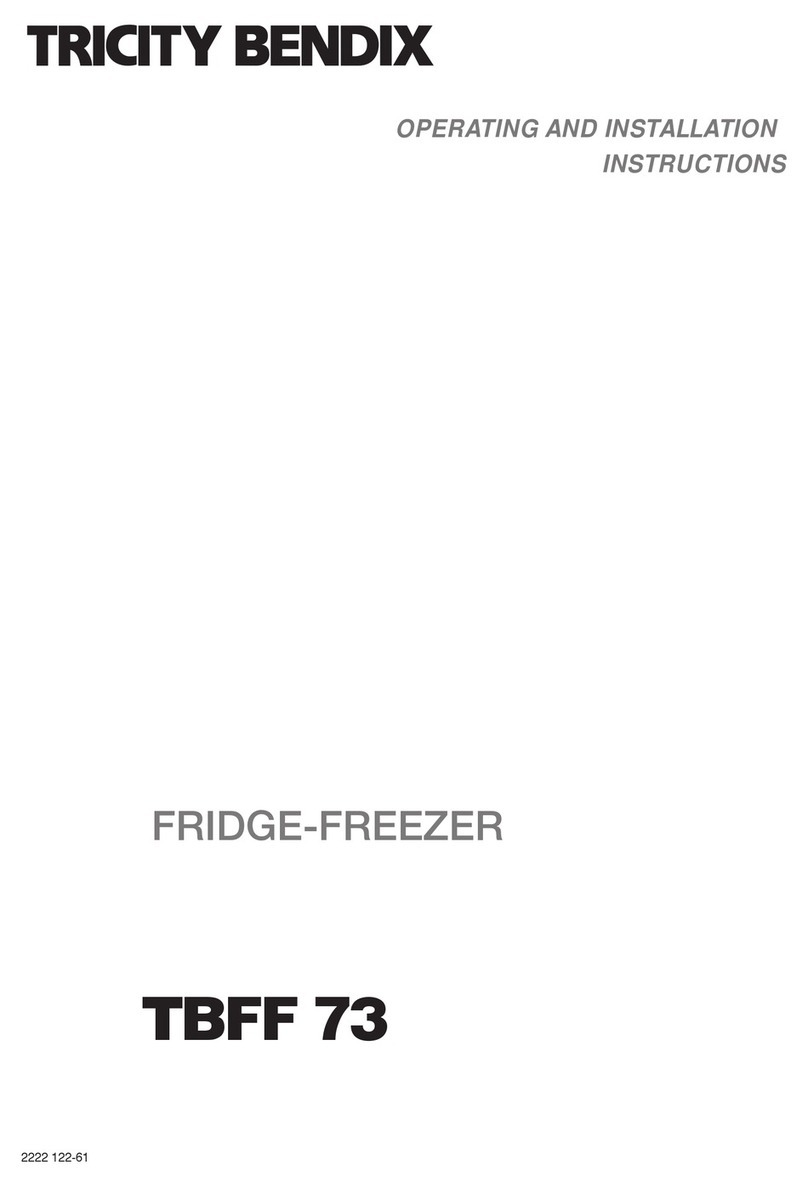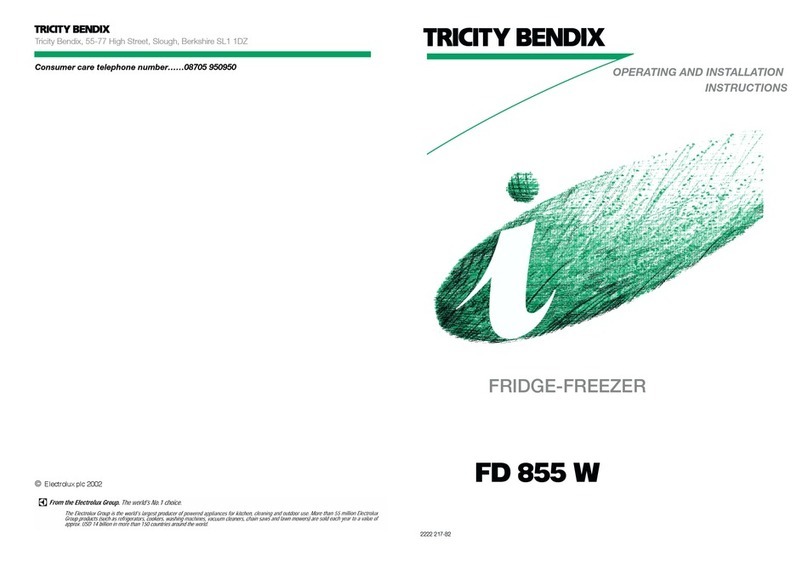5
Normal Operating Sounds
• You may hear faint gurgling or u ling sounds
when the refrigerant is pumped through the coils
or tu ing at the rear, to the cooling
plate/evaporator or to the fixed freezer shelves.
• When the compressor is on, the refrigerant is
eing pumped round, and you will hear a whirring
sound or pulsating noise from the compressor.
• A thermostat controls the compressor, and you
will hear a faint ’click’ when the thermostat cuts in
and out.
Fresh food refrigeration
To o tain the est performance, do not store warm
food or evaporating liquids in the refrigerator; do
cover or wrap the food, particularly if it has a strong
flavour.
Do not cover the shelves with any protective
material, such as paper, card oard or plastic, which
may o struct the air circulation through them.
To help you use your refrigerator correctly, here are
some more useful hints:
Raw meat ( eef, pork, lam & wild fowl): wrap in
polythene ags and place on top of the salad
crispers.
Meat can only be stored safely in this way for
one or two days at the most.
Fruit & vegeta les: these should e thoroughly
cleaned and placed in the ottom salad crispers.
Butter & cheese: these should e placed in special
airtight containers or wrapped in aluminium foil or
polythene ags to exclude as much air as possi le.
Milk ottles: these should have a cap and should e
stored in the ottle rack on the door.
Making ice cubes
The appliance is provided with one or more trays for
ice-cu es trays.
Fill the tray(s) 3/4 full to give the ice space to expand
and place them in the freezer compartment.
To release the ice cu es simply give the tray a slight
twist.
Do not use sharp or metallic instruments to remove
the trays from the freezer.
Thawing
Frozen or frozen food, prior to eing used, can e
thawed in the fridge or at room temperature
depending on the time availa le. Small food items
may even e cooked from frozen; in this case
cooking will take longer.
Any frozen food which is allowed to thaw accidentally
should either e eaten as soon as possi le or thrown
away. Alternatively, if the food is uncooked and has
not een completely defrosted it can e cooked and
then refrozen.
Meat, fish and fruit should e thawed in the
refrigerator compartment and small pieces of meat
can even e cooked while still frozen, ut you must
ensure that it is thoroughly cooked through.
Vegeta les should e directly immersed in oiling
water; ready-cooked dishes can e placed directly in
the oven in their aluminium wrapping.
A microwave oven is particularly suita le for thawing
any type of frozen or deep-frozen food: follow the
oven instructions, particularly regarding the
placement of aluminium wrapping or containers in
the oven.
Defrosted cooked food must never be refrozen.
Frozen food storage
When first starting-up or after a period of use, efore
putting the products in the freezer compartment let
the appliance run for at least two hours on the
coldest setting, then turn the thermostat kno to the
normal opertion position.
To o tain the est performance from this appliance,
you should:
if large quantities of food are to e stored, remove all
drawers and askets from appliance and place food
on cooling shelves.
Pay careful attention not to exceed load limit stated
on the side of the upper section (where applica le).
Do not exceed the storage period indicated y the
manufacturer.
Finally, do not open the door frequently or leave it
open longer than is a solutely necessary.
Important
Do not put car onated liquids, (fizzy drinks etc.), in
the freezer compartment.
Ice Iollies, if consumed immediately after removal
from the freezer, can cause low temperature skin
urns.
Do not remove items from the freezer if your hands
are damp/wet, as this could cause skin a rasions or
“frost/freezer urns”.
16
Door reversal directions
1. Disconnect from the electricity supply.
2. Remove all loose items, including food, store food
in a cool place.
3. Remove the ventilation grill (D).
4. Unscrew the ottom hinge (E).
5. Remove the freezer door y releasing it from the
middle hinge (H).
6. Unscrew the middle hinge.
7. Slide out the fridge door from pin (G), unscrew
the latter and then screw it down into the hinge
provided on the opposite side, after having
removed the small plugs which should then e
fitted on the opposite side.
8. Refit the fridge door and replace the middle hinge
to the left hand side.
9. Replace the door and ottom hinge (E) on the
opposite side.
10.Remove the plug (F) from the ventilation grill (D)
and replace it on the opposite side. Re-assem le
the ventilation grill (D).
11.Remove the handles and refit them on the
opposite side. The holes that are not used are to
e masked with the plastic plugs removed.
The doors can e aligned y adjustung the middle
hinge, with help of a tool, after having slackened the
two screws.
After having reversed the opening direction of the
doors check that all the screws are properly
tightened and that the magnetic seal adheres to the
ca inet.
Attention
After completion of the door reversing operation,
check that the door gasket adheres to the ca inet. If
the am ient temperature is cold (i.e. in Winter), the
gasket may not fit perfectly to the ca inet. In that
case, wait for the natural fitting of the gasket or
accelerate this process y heating up the part
involved with a normal hairdryer.

